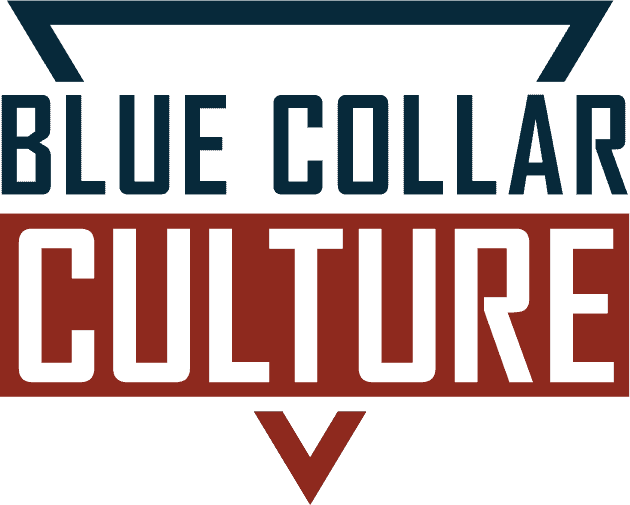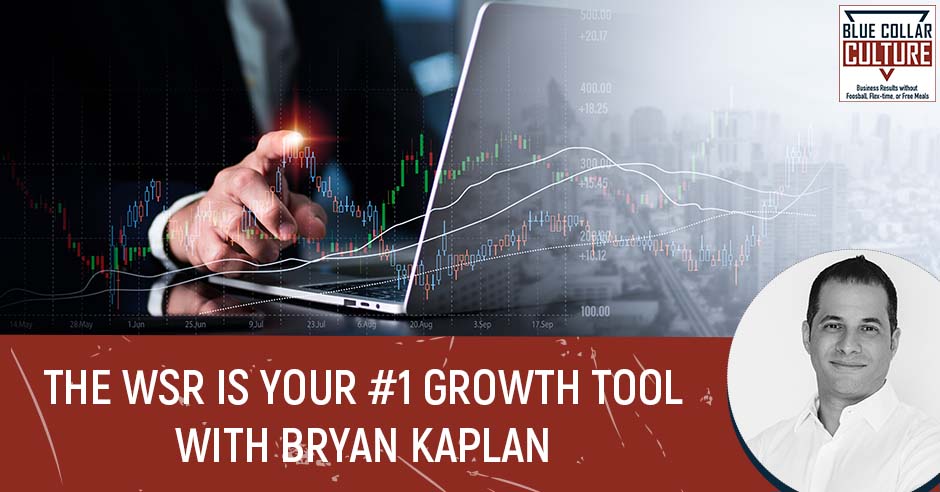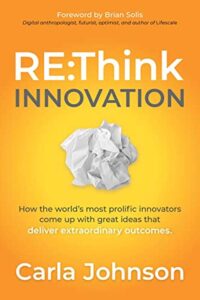
We have reached the end of the line – this is the last episode for Blue Collar Culture. But fret not, because Ryan Englin and Jeremy Macliver have so much more in store in the future! Tune in as they talk about two new podcasts, an upcoming mastermind, and a new book.
—
Get Ready For A New Season
Welcome back to a special episode for Blue Collar Culture here. My name is Ryan Englin. I am here with my co-host Jeremy Macliver. Say hi, Jeremy.
Welcome back or welcome me back, I guess a little bit.
I’m sure some people are going, “Who is this Jeremy Macliver? I’ve heard of him in the intro and I’ve seen him on the website, but I haven’t heard him on a show for a while.” There have been some changes. We have a very special announcement, so stay tuned. Before we get started, Jeremy, where have you been and what has been going on?
I have been behind the scenes working hard and looking at what makes a business move. We’ve been doing a lot of deep diving into the entrepreneurial businesses of home service trades like tree trimming, plumbers, and electricians and saying, “What are the needle mover ideas?” We’ve got some super exciting stuff we want to announce now. We’ve been doing a little bit of deep diving and taking a break from it all.
For those of you that don’t know, Jeremy and I have been working on a book for way too long. We’re going to have more about that here in the coming months. In the thick of everything, Jeremy made some great decisions in his business and was able to take on some opportunities. Frankly, I think you had to just say, “I got to give up somewhere.” That’s what happened. You’ve got some amazing projects you’ve been working on. Can you share some of those with us?
We are starting a mastermind. Now we’ve recognized the fact that when we dug deep into the entrepreneurial world and what makes the difference, it’s the conversations back and forth. The conversations we’re giving on this show where you get to learn. We’re creating that dynamic where you can have those back and forth with the community of other entrepreneurs that are like-minded in the trades. We’re not getting a lot of the woo-woo conversations about nap pauses and all the stuff that we didn’t want on here anyway. We’re taking all that out and saying, “What really moves it?” We’ve been building that community. I’m super excited. It’s going well. We’re seeing lots of interesting ideas and real-world examples of the creativity that entrepreneurs bring.
That’s fantastic. Many entrepreneurs do need that support, help, ideation, and creativity that comes through a conversation, being mentored and coached. I think that’s fantastic that you’ve got that going on. Any other projects that you have going on that our audiences need to know about?
We have a new podcast coming, too.
What? Tell me about it.
We do have a new podcast. It’s $10,000 Idea In 10 Minutes. We are harvesting the ideas, the dreams, and all the creative little nuances of business. We’re packaging them into bite-size podcasts where you can learn little nuggets on every aspect of the business. From the way the finances run to the way you’re selling and closing system automation everywhere you look inside the business. We’re finding those little nuggets as we explore with other entrepreneurs and what makes your business profitable. I’m super excited to launch this new podcast.

Sometimes it’s those little adjustments and little tweaks that can have a profound effect. The rule of 1%. One percent change now can be $1 million in a couple of years. That’s great. You’re going to have guests on the show, correct?
One percent change today can be a million dollars in a couple of years. Click To TweetAbsolutely.
Subject matter experts. Great conversation. I love the ten minutes. I don’t know about the people you’re talking to, but people I talk to are like, “If I had an extra ten minutes, I would do something else with my time.” Everybody is so busy these days.
This whole mastermind of connecting all the entrepreneurs together and the creativity of these short ten-minute bites, as we said, we dug deep and took a little time to reflect on what’s moving the needle. In that timeframe, I actually took a hike with my family. They did it for my birthday as a little bit of a surprise when we hiked Mount Whitney. It’s the highest mountain in the lower 48 states. I have four kids that wanted to climb that with me. I had a 7-year-old, 9-year-old, 12-year-old, and 15-year-old with me.
It was on that that I had an a-ha moment. The hike took a total of eighteen hours straight. I had all these kids from 4:00 in the morning until 10:15 at night on the trail, nonstop. I’ve had a lot of people ask me, “How did you get them to do that?” First of all, there was a desire and a will that they wanted to do it for Daddy. My daughters, at one point, early in the morning as the sun was rising, said, “Daddy, we want to make it to the top for you.”
I found that a lot of entrepreneurs have a deeper cause and deeper purpose that they are propelled by something. They want to get to the top of a mountain, but there are a lot of struggles that go with that. As we were walking through that day, there are a lot of different things that happened, but there’s one thing that I didn’t realize until a little bit later into the journey that I was doing. As we’d be walking as a family and there are six of us going, one of the kids would get tired but no one was willing to complain. They were all tough. They were all going to make it. The way I would notice it is their feet would start to drag or they would fall behind one of their friends or one of their brothers or sisters.

What I would do is I would grab their hand, walk with them, and talk to them. I didn’t have to coach them, “Hurry up.” We would just talk about whatever they needed to talk about at that time. That would pick their spirit back up, they would go back on the trail, and they’d be rocking and rolling. We’d keep moving. As I’d be holding one of their hands and walking and talking about whatever they wanted to talk about, I would notice another kid was falling behind and was starting to drop. I would grab their hand. Just shift and talk to them.
In that, I learned how much the borrowed energy of those that are with you can help propel your journey. I was paying attention to that and I began to pick that up. I didn’t quite click until I was talking to an entrepreneur about a week later who was tired and exhausted. All they needed was somebody to hold their hand. They had a big cause, a big mountain they’re wanting to go on, and they needed somebody to have that conversation with to lift their spirit.
That’s what we’re creating around this mastermind. Everybody there is successful and has a cool idea. Everybody has done cool things. Everybody is going somewhere cool. Maybe different mountains, but we need a place where we can hold each other’s hands. Not get kumbaya, but raise the bar for each other and help each other climb. It’s a lot easier.
I’m going to echo that, too. For those of you that don’t know Jeremy personally, he is not a Kumbaya guy. When he says it, I believe it.
The more that I looked at it, you look at the marathon runners that win world records. They have pacesetters. They had people that were running with them. I know Lance Armstrong lost a lot of his titles for some cheating, so hopefully, we don’t allow any cheating in this group, but there were pacesetters there. Whenever you look at any of these world-renowned accomplishments, there were people that were along the journey. The entrepreneur is so lonely.
Yeah, it definitely can be. I think that’s great. We do some of the mindset stuff, but what you’re talking about is more of that block in between their ears and that mental stuff that gets in the way. Over here at Core Matters, we want to change the way people think about recruiting, hiring, and retention. That’s such a small part of the business. There are so many things that get involved in the rest of the business and get in the way sometimes.
Sometimes good things get in the way, like relationships with family, friends, and hobbies. To have someone going on that journey with you and know that you’ve got a confidant, that’s a big thing. I can have the conversation, no judgments. I don’t have to worry about what my peers think of me. In a trusted and safe environment. That’s fantastic. I love that.
Sometimes, even good things get in the way of business. You must have trusted people around you to support you along your entrepreneurship journey. Click To TweetWhen you go to a networking event, entrepreneurs and successful business owners are the best at hiding what’s going on. You ask them, “How’s business?” They’re like, “It’s doing great.” They’re not going to tell you that they’re struggling to cover payroll. They can’t tell you that they can’t get a new employee to save their life and they’re exhausted. They’re not going to tell you those things because they can’t. Truthfully, you can’t share those.
Forget the money or the people side of the business. What about the, “I’m struggling with my marriage. My relationship with my kids is a challenge?”
You can’t have those conversations. Your friends don’t get it. They just don’t understand it. Other entrepreneurs in your community right there, you don’t want to destroy your name or your reputation. You’re not going to let it there because that’s where you’re getting your referrals or business. You’re going to keep that pumped up. At some point, you begin to isolate. That is the hardest way to climb.
Is this mastermind open to all entrepreneurs, or is this for certain segments and certain industries? How’s that work?
This is designed for entrepreneurs and business owners in the home service trades. We want this to be about real tangible stuff. Again, take out the woo-woo stuff. These are tree trimmers, plumbers, electricians, handymen, pool guys, and anybody that goes to the house. They all have a very similar thing. They’re close enough to each other to give real-world results and things that can move the needle for them.
Home service contractors, this is what this is for. I’m guessing it’s virtual.
Yes. We don’t have to get into details here, but there will be some live events that we’ll meet here in Phoenix.
Is this something that people can sign up for now, can register for it, or they can learn more about? How do they learn more about this thing?
They can email me at [email protected] or they can go to JeremyMacliver.com and they can learn more there.
You and I both have big announcements that I want to share with our audience. This is with a little bit of sadness, but it’s also a huge opportunity and we’ve got some great things. This is our last episode of the Blue Collar Culture.
It’s been a fun ride, too.
Just shy of 100 episodes, and there were opportunities for both of us to take things in different directions. I love this mastermind that you’ve got going on and some of these other projects that you’re working on, but here’s the good news. Not only will you have one season of Blue Collar Culture, but you’re now going to have two separate podcasts to tune in to.
Jeremy has already shared his $10,000 Idea In 10 Minutes. I love the 10 minutes. I love the $10,000 idea. I’m sure you’re going to have some amazing guests that are going to get right to the point. For those of you that don’t know Jeremy, he is a get-to-the-point kind of guy. I think that’s going to be a great show. The show is not ready to launch yet, is that correct, Jeremy?
No. We’re still out about a couple of months.
We will make sure to let you know about it so that you can subscribe and listen to that podcast. I have some exciting news as well. My new show is already alive. My show is called The Talent Tackle Box. I realized a while back that I love talking about culture, people, and the soft squishy side of business or the people side of business.

I wanted to make it more than just hiring and recruiting. I wanted to make it everything to do with how you attract, how you hire, how you retain people, and how you can change the way you think and the way you approach this. At the end of every episode of the Talent Tackle Box, you’re going to get one new tool, one new technique, or one new process to put in your tackle box that you can put into action right away. It’s very similar to the $10,000 Idea. We are about creating action and creating action quickly.
On the Talent Tackle Box, we’re going to have three different types of shows. I did want to share this with you. Make sure you tune into all of them because they’re all going to be great. We’re still going to interview subject matter experts. We’re going to bring in people that are experts in their field. We’ve got a great lineup already of people that are going to be able to share with you whether it’s hiring, people, or finances. It’s all interconnected in business like Jeremy was talking about. There’s going to be so much that our recognized experts are going to be able to bring to the show, but we also are going to have two different types of shows.
Another one is we’re going to be interviewing some of our clients to talk about the challenges that they overcame. What they went through and how it created opportunities for them that they didn’t even think were possible. Finally, you’re going to get a few episodes that I’m titling Ryan’s Rants. I have a lot of strong opinions about some of the mistakes and some of the opportunities that exist in business. Every once in a while, you’re going to hear me on the show sharing with you some of those opportunities, some of those mistakes that you’re making, and helping you overcome them very quickly.
Two new podcasts coming out. Two very different directions. I love that the $10,000 Idea aligns with that mastermind and having that confidant and someone you can trust. A lot of opportunities and a lot of new projects are coming out soon. We’ll make sure that you have all of that information so that you can go ahead and take your business to the next level.
Our book is coming out soon so I’m looking forward to that.
Yes. In fact, Jeremy and I were talking about getting this thing locked and done to final editing, so we can start working on the Audiobook. Everything else, get it done. I’m very excited about that. Lots of great information in there as well. Everything from attracting, hiring, retaining people, how to assess them, and how to engage them. Lots of great stuff. That has been a work in progress for some time. We are all very excited.
As we conclude this episode, I want to thank everyone that has helped us make Blue Collar Culture such a success. From the production team, the marketing team, and even our past guests. We’ve had some great ones. We’ve had some shows that have been off the charts popular because there’s so much value baked in them. I want to thank everybody that helped us make this possible.
For either of ours, we will both be looking for guests. If you’re tuning in to this and you feel you have a $10,000 idea that you would love to share, reach out to me, reach out to Ryan, or respond to this. We would love to have that conversation. If you believe you have a little thing that you would love to share about talent that you can add to somebody’s tackle box, reach out with that.
Another idea I had while you were talking, Jeremy, is if there’s something that you want to learn on the show or you’re struggling within your business or if you could find this type of guest or someone that could help me with this, please, we are totally open to new ideas. We want to make this super valuable for you and have incredible content. Jeremy, it has been a blast working on this show with you. I know you disappeared about 20 or 30 episodes ago, but it was for a good cause because you’re doing something.
I had some big lifting to do and buckled down on it.
You found some opportunities you just could not ignore. You’re serving the community. You’re doing the things that we created this show for. You’re doing it in a direct, make it an impact, and helping out a lot of people. It’s great. Thanks for doing this show with me. I know we’ll be doing other things together. As Jeremy said, we got the book coming out soon. This won’t be the last that you see us together, for sure.
Thank you.
Important Links
Love the show? Subscribe, rate, review, and share! https://bluecollarculture.com/podcast/
















 My vision is to empower every construction business owner to be valued, respected, and treated as a professional no different than a doctor or a lawyer. Through my training programs and masterclasses, I will help you change how you do business. Here is my story.
My vision is to empower every construction business owner to be valued, respected, and treated as a professional no different than a doctor or a lawyer. Through my training programs and masterclasses, I will help you change how you do business. Here is my story.




 Carla Johnson is a global keynote speaker, a best-selling author and a recognized marketing and innovation strategist.
Carla Johnson is a global keynote speaker, a best-selling author and a recognized marketing and innovation strategist.